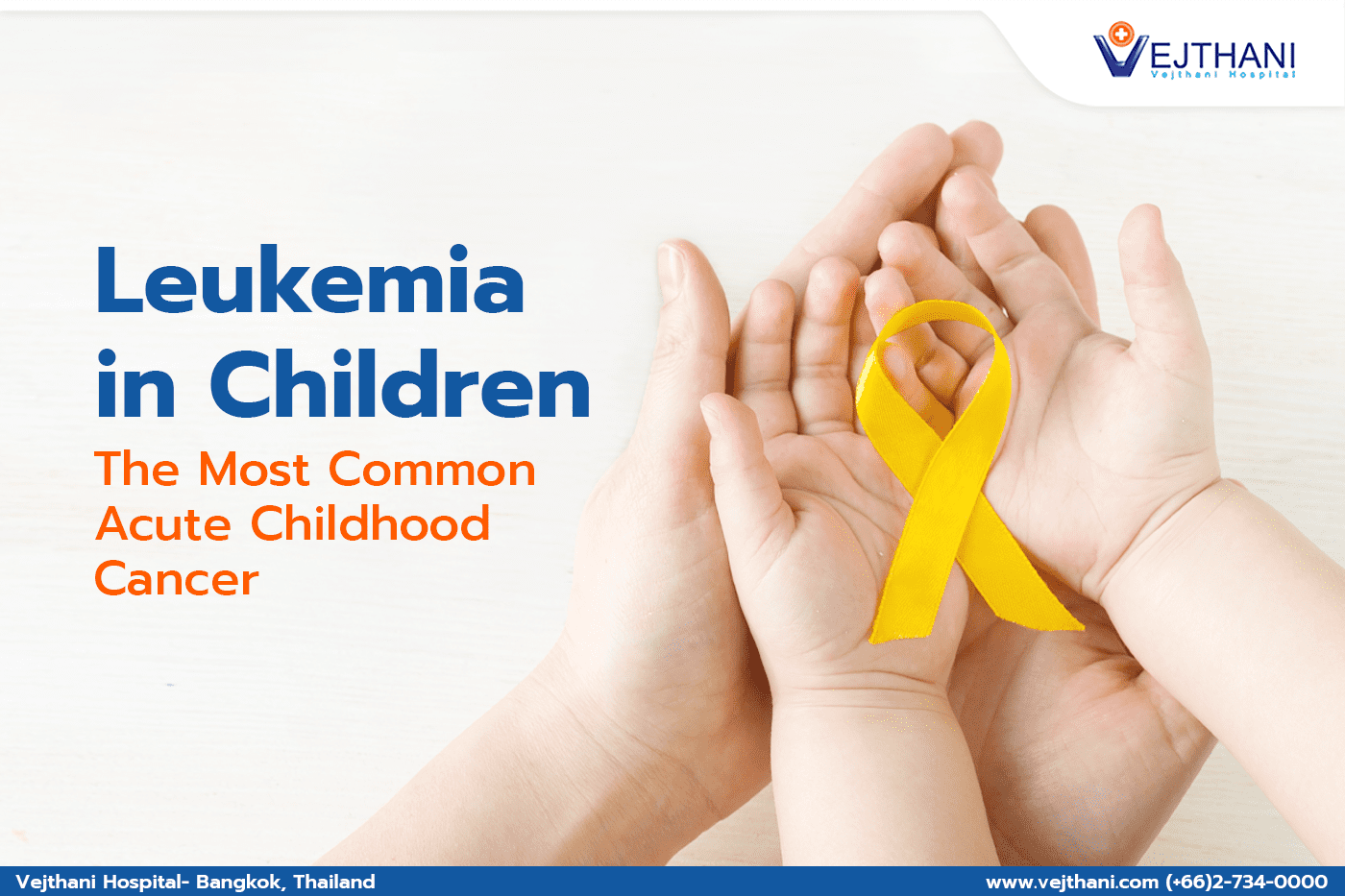

Childhood leukemia, also known as pediatric leukemia, the most common type of cancer in children and teens, is a cancer of the white blood cells. Abnormal white blood cells form in the bone marrow. They quickly travel through the bloodstream and crowd out healthy cells. This increases the body’s chances of infection and other problems.
As tough as it is for a child to have cancer, it’s good to know that most children and teens with pediatric leukemia respond favorably to treatment.
Risk Factors for Childhood Leukemia
- Genetic: Inherited from parents
- An inherited disorder such as Li-Fraumeni syndrome, Down Syndrome, or Klinefelter syndrome.
- Reduced immune system
- Having siblings with Leukemia. The risk is much higher with identical twins
- Being overweight
- Too much sun exposure
- Women drinking a lot of alcohol during pregnancy
- Exposure to radiation and some chemicals (benzene, pesticides)
- Exposure to chemotherapy
- Electromagnetic field exposure
- Living near a nuclear power plant
- A history of immune system suppression such as organ transplant
Types of Childhood Leukemia
Almost all cases of childhood leukemia are acute, which means they develop rapidly. A small number are chronic and develop slowly.
- Acute lymphoblastic leukemia (ALL), also called acute lymphocytic leukemia. ALL accounts for three out of every four cases of childhood leukemia.
- Acute myelogenous leukemia (AML). AML is the next most common type of childhood leukemia.
- Hybrid or mixed lineage leukemia. This is a rare leukemia with features of both ALL and AML.
- Chronic myelogenous leukemia (CML). CML is rare in children.
- Chronic lymphocytic leukemia (CLL). CLL is very rare in children.
- Juvenile myelomonocytic leukemia (JMML). This is a rare type that is neither chronic nor acute and occurs most often in children under age
Signs and Symptoms of Childhood Leukemia
- Fatigue or pale skin
- Infections and fever
- Frequent and easy bleeding or bruising
- Extreme fatigue or weakness
- Shortness of breath
- Coughing
Other symptoms may include:
- Bone or joint pain
- Swelling in the abdomen, face, arms, underarms, sides of the neck, or groin
- Swelling above the collarbone
- Loss of appetite or weight loss
- Headaches, seizures, balance problems, or abnormal vision
- Vomiting
- Rashes
- Gum problems
Diagnosing Childhood Leukemia
To diagnose childhood leukemia, the doctor will take a thorough medical history and perform a physical exam. Tests are used to diagnose childhood leukemia as well as classify its type. Initial tests may include:
- Blood tests to measure the number of blood cells and see how they appear
- Bone marrow aspiration and biopsy, usually taken from the pelvic bone, to confirm a diagnosis of leukemia
- Lumbar puncture, or spinal tap, to check for spread of leukemia cells in the fluid that bathes the brain and spinal cord
A pathologist examines cells from the blood tests under a microscope. This specialist also checks bone marrow samples for the number of blood-forming cells and fat cells. Other tests may be done to help determine which type of leukemia your child may have. These tests also help the doctors know how likely the leukemia is to respond to treatment. Certain tests may be repeated later to see how your child responds to treatment.
Treatments for Pediatric Leukemia
Have an honest talk with your child’s doctor and other members of the cancer care team about the best options for your child. Treatment depends mainly upon the type of pediatric leukemia as well as other factors.
The good news is the survival rates after treatment for most types of pediatric leukemia have increased over time. And treatment at special centers for children and teens provides the advantages of specialized care. In addition, childhood cancers, like pediatric leukemia, tend to respond to treatment better than adult cancers do, and children’s bodies often tolerate treatment better.
Before pediatric leukemia treatment begins, sometimes a child needs treatment to address illness complications. For example, changes in blood cells can lead to infections or severe bleeding and may affect the amount of oxygen reaching the body’s tissues. Treatment may involve antibiotics, blood transfusions, or other measures to fight infection. The following are two treatment approaches:
- Chemotherapy is the main treatment for pediatric leukemia. Your child will receive anticancer drugs by mouth, or into a vein or the spinal fluid. To keep leukemia from returning, there may be maintenance therapy that occurs in cycles over a period of two or three years.
- Targeted therapy is also sometimes used for leukemia. This therapy targets specific parts of cancer cells, working differently than standard chemotherapy. Effective treatment for certain types of pediatric leukemia, targeted therapy often has less severe side effects.
Other types of treatment may include radiation therapy, which uses high-energy radiation to kill cancer cells and shrink tumors. It may be used to help prevent or treat the spread of leukemia to other parts of the body. Surgery is rarely used to treat childhood leukemia.
If standard treatment is likely to be less effective, a stem cell transplant may be the best option. It involves a transplant of blood-forming stem cells after whole body radiation combined with high-dose chemotherapy is performed first to destroy the child’s bone marrow.
For more information, please contact
Super Kid’s Center, Vejthani Hospital
Call: (+66)2-734-0000 Ext. 3310, 3312, 3319
English Hotline: (+66)85-223-8888
- Readers Rating
- Rated 5 stars
5 / 5 ( Reviewers) - Spectacular
- Your Rating
























